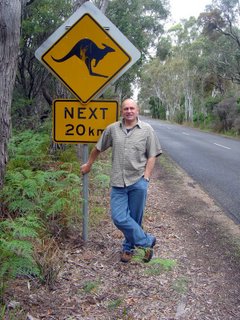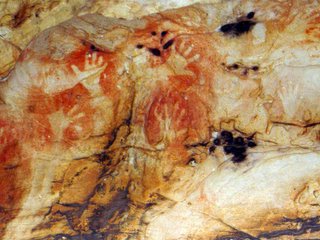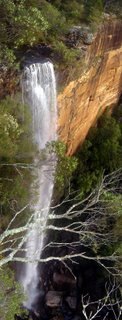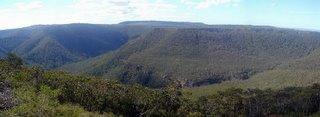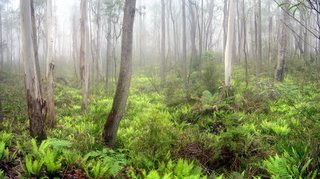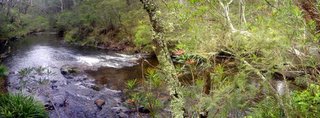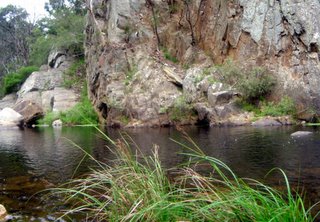 Lake St Claire National Park, Tasmania
Lake St Claire National Park, Tasmania
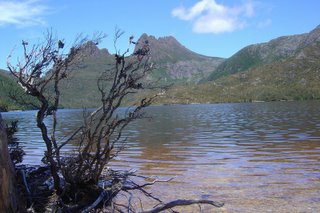
How to get there. I flew from Melbourne to Hobart and drove a hire car from Queenstown staying at Strahan. The journey from Queenstown to the Cradle Mountain visitor centre took a little over two hours. That's taking it easy. It's about 125 kilometres in all, traveling on the A10 and then turning into the C132 to arrive at the Park. You should take your time because the roads are terrible. The roads in Zimbabwe are better. Seriously!
The walk. You can drive to the car park near the main lake, but it's often full. This park gets an incredible number of visitors from all over the world. It's not unusual to hear French, German or Japanese spoken on the shuttle buses that depart the visitor centre. There are eight shuttle buses in all carrying people to the various walks. The final stop is Lake St Dove which is at the base of Cradle Mountain.  There' s such strong demand for the buses that you generally have to wait a while to get back to the visitor centre. Despite the wait, this park is truly exceptional. And one must say that the excellent organisation and amenities enhance the experience.
There' s such strong demand for the buses that you generally have to wait a while to get back to the visitor centre. Despite the wait, this park is truly exceptional. And one must say that the excellent organisation and amenities enhance the experience.
I did the Lake Dove walk and then did the walk to Lake Lila. Cradle Mountain takes its name from the sort of cradle used to separate gold from silt rather than one found in a nursery.
This park is beautiful and I'm so glad I got to see it. Sadly, I had little more than a day to spend there. I really would have liked to have seen more. Overall, the experience is superb and the good organisation is a real credit to the park management. One day I'll do the 65 kilometre overland trek from Cradle Mountain to the Lake Saint Claire (which takes six days).
Good information can be obtained from the Tasmanian Parks and Wildlife Service portal. The information is hard to find but it's all there at: www.parks.tas.gov.au/natparks/stclair/activities.html. There are even downloadable maps. These aren't any good for walking, however so you'll need to buy more detailed maps at the visitor centre.
Pictures: 1 Strange kind or tree fern, 2. Cradle Mountain as seen from the beginning of the walk. 2. Another view of Cradle Mountain from lake Lila. Click on a picture to see an enlargement.


 The Walks. I've done quite a few so I won't comment on any particular trail. I'll do that later. The Grampians consist of a main system of ranges encompassing some 167,000 hectares. It has everything; magestic waterfalls, a kangaroo feeding ground, spectacular summit vistas, ancient Koori art sites, such as the cave of fishes and the sublime cave of hands, to name just two. Then there's the many other heritage sites such as the houses of the German pioneer families. There's a good range of accomodation available at Hall's Gap which is a great place for a long weekend devoted to walking. I've attached a few pics taken from my many trips there in 2004 and 2005.
The Walks. I've done quite a few so I won't comment on any particular trail. I'll do that later. The Grampians consist of a main system of ranges encompassing some 167,000 hectares. It has everything; magestic waterfalls, a kangaroo feeding ground, spectacular summit vistas, ancient Koori art sites, such as the cave of fishes and the sublime cave of hands, to name just two. Then there's the many other heritage sites such as the houses of the German pioneer families. There's a good range of accomodation available at Hall's Gap which is a great place for a long weekend devoted to walking. I've attached a few pics taken from my many trips there in 2004 and 2005.